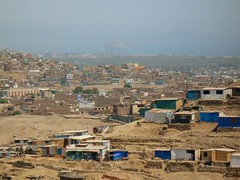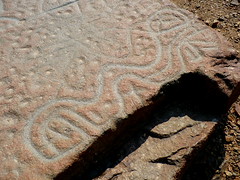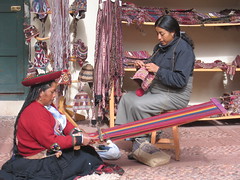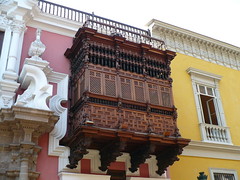Did the Incas explore the Pacific?
There has long been evidence, most of it barely investigated, that Andean peoples and Polynesian peoples have had contact various times in their pre-Columbian pasts. It has even been suggested that people arrived in South America from Polynesia – evidence of human activity in Chile from a time before humans were supposed to have crossed the Bearing Straits has been found.
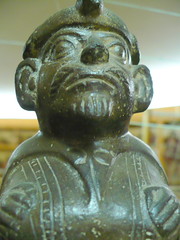 In Northern Peru, in the region of Trujillo, the Moche culture developed. Their famous pottery, as well as other things, often dipicted human faces. Some of these faces, amazingly, seem to be those of races that should not have been found here. Dark skinned people, even oriental people.
In Northern Peru, in the region of Trujillo, the Moche culture developed. Their famous pottery, as well as other things, often dipicted human faces. Some of these faces, amazingly, seem to be those of races that should not have been found here. Dark skinned people, even oriental people.
The Chincha, a coastal people from modern day Ica, were famous for their fleets of vessels, numbering in the hundreds of thousands, that are said to have sailed from Ecuador to Chile. A fact that made the Incas highly respectful of them.
Later, Inca Emperor Pachacutec conquered a vast area from Chile to Ecuador forming the Tahuantinsuyu. He then sent his son, Túpac Inca Yupanqui, to the north with vast armies to extend the empire to the edge of modern-day Colombia.
Now emperor himself, Túpac Inca Yupanqui, who spent alot of his time in the north in his favourite city of Quito, was not still content with what was the largest empire the Americas had seen.
It is said in tales by the early Spanish conquerers, told to them by Inca historians, that when a group of traders landed in Tumbes from somewhere in the Pacific, the Inca decided to embark on a quest to find, explore and perhaps conquer the distant lands where these dark-skinned people came from.
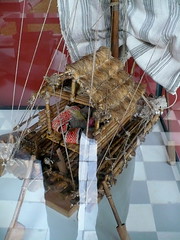 He ordered the building a fleet of rafts, and with a contingent of 20,000 men set sail into the west. Months past, almost a year. It was assumed that the adventurous Inca had died. But as life in the Empire started getting back to normal, Túpac Inca Yupanqui landed on the Peruvian coast.
He ordered the building a fleet of rafts, and with a contingent of 20,000 men set sail into the west. Months past, almost a year. It was assumed that the adventurous Inca had died. But as life in the Empire started getting back to normal, Túpac Inca Yupanqui landed on the Peruvian coast.
He brought back with him stories of islands, in particular the “Fire Island” and the “Outer Island”. He had also returned with black-skinned people, a large amount of gold, a brass chair and the skin and jaw bone of an unknown creature called a horse. These were taken to Cusco to be put on display.
Where did Túpac Inca Yupanqui go? Some theorise that it was the Galapagos Islands, others that it was Easter Island. Interestingly, it is the people of Easter Island that have an oral history that accounts that a long-eared prince arrived on the island from afar to rule over them for a short period before leaving by boat.
Most fascinating are the totora reeds that grow on Easter Island. These reeds, of all the islands in the Pacific, are found only here. In the rest of the world, the only other place they are found is in Peru and Bolivia, grown around Lake Titicaca and used by Peruvian coastal cultures to build rafts. At the Ahu Vinapu archaeological site on Easter Island, the stone work looks strikingly familiar to anyone who has seen Inca constructions. Tests have also found South American micro-organisms in the sediment on the island.
When Europeans arrived in ships at Easter Island, the inhabitants seemed quite relaxed about the situation, seeming used to foriegn visitors and the idea of sea-faring… how could they not be, they arrived here somehow.
The Incas, confronted by Pizarro and the other Spaniards arriving by ship in Tumbes were also not taken aback. Seemingly a common occurance, the Spaniards were at first ignored by the Inca Atahualpa who was busy travelling back to Cusco.
Tags: chincha, easter island, moche, pizarro, quito, reeds, totora, tumbes, tupac yupanki



